BOOM is an India-based fact checking organization that began actively debunking fake news about the COVID-19 pandemic since January 25, 2020, one week after China declared the spread of the virus. In an analysis of around 178 fact checks that were purely related to COVID-19 information between January to May 2020, we found evidence of a phased ‘misinfodemic’ of misinformation spreading across online platforms in India. We found that COVID-19 misinformation increased in the month of March as the number of COVID-19 cases increased in the country. In this period, COVID-19 dominated the news cycle which also contributed to the increase in misinformation about the disease. While in February, BOOM fact-checked 13 misinformation pieces about COVID-19, in March, this number had increased to 69 articles.
Most of the false or misleading claims we found were circulated with videos (35%). There was also a significant number of text messages (29.4%) being shared with fake cures, treatments or quotes from celebrities, along with images (29.4%) that were either misrepresented or doctored. We also noticed a small number of audio clips (2.2%) going viral with false context.
Our investigation classifies two waves of COVID-19 misinformation on social platforms such as WhatsApp, Facebook, Twitter – medical and communal. Medical misinformation that we found focused on theemergence, origin, spread, and cures of the virus. Communal misinformation emerged as the number of patients testing positive for COVID-19 increased, and the disease spread across the country. This type of misinformation leaned on and exacerbated existing tensions in the country, particularly long-standing rifts between the country’s Muslim minority and Hindu populations. Misinformation during this wave took on narratives related to the economy, politics, and local communities.
In both forms, COVID-19 misinformation on social media paints a picture of a changing pattern of news consumption, suggesting that the area may be an important topic for future research (Li et al, 2019). According to a 2018 Weber Shandwick study about The Great American Search for Healthcare Information, a study of 1700 individuals, around 73% of Americans gathered their healthcare information from the internet. There is no Indian study highlighting the sources of health information for Indians.
In India, in some cities like Mumbai, the police force enforced strict action for peddlers of fake news and misinformation. Recent media reports suggest that Facebook and WhatsApp have been taking active steps to curb the spread of misinformation on their websites. Research should be carried out to further understand how social media itself could be used to contain the spread of misinformation.This report outlines two distinct types of misinformation which we observed throughout the COVID-19 crisis in India between January to April 2020.
Wave One: Medical Misinformation
India reported its first three cases of COVID-19 between the last week of January 2020 and the first week of February 2020. According to our analysis, this is also when the first wave of misinformation emerged in the country. Misinformation during this period was largely related to the science, spread, cause and conspiracy theories about the virus. Then, throughout February, India did not report any new cases. Our analysis found that during this time, there was a rise in misinformation about videos from China, being shared with misleading narratives. During this time, a video of three events not related to COVID-19 was passed off as police brutality on COVID-19 patients in China. On March 2, 2020, India reported new cases as Indians returned home from countries in Europe and Asia. With the emergence of new cases, misinformation on the prevention, control and cure of the virus, such as the use of home remedies not backed by science, like drinking garlic water to prevent COVID-19, began to circulate again.
India’s first wave of misinformation revolved around the origin, causes, spread, and treatment of the virus and also China’s response to controlling the outbreak. In the early months of the pandemic the origin of the virus, and its modes of transmission, were unclear to scientists and the public alike. Conspiracy theories emerged on Indian social media, even though the virus was not yet present in the country. False claims about the virus originating in various animals, without any scientific evidence, circulated on platforms. Scientific progress on human to human transmission led to further speculations about the virus, such as false claims about the virus being a bioweapon, manufactured in a lab.
The origin of the virus was, and still is, mired in misinformation about it having emerged from a lab in Wuhan, of the virus already being patented, of the virus being a bioweapon, all without any proof or credible evidence. In one misleading account, a false message which announced that COVID-19 is a Chinese conspiracy was attributed to somebody pretending to be a Chinese intelligence officer. However, this turned out to be a fictional story on social news platform Reddit. The thread asked users to write a fictional story related to a real life event.
False conspiracy theories circulated around China killing 20,000 patients to underreport the cases of COVID-19 in the country—misinformation that emerged from a web article on AB-TC, also known as City News, a regular fake news peddler. Other theories, such that Dettol, many books, the Simpsons and Asterix predicted or already knew about the virus, have been rampantly circulating on social media. False information also circulated about bats, chicken, and goats, as misleading origins of the virus have been circulating on social media. Other misinformation speculated that 5G Technology could have led to emergence of the virus. All of these claims have been debunked by BOOM and other fact-checking organizations.
Fake notifications attributed to various organizations also emerged as a norm during the first wave. Claims about the causes, spread, cure, and treatment of COVID-19 that were not supported by research were attributed to national and international organizations.Fake notifications attributed to UNICEF and the Ministry of Health about ways to prevent the virus and not purchase colours from China during Holi, the festival of colours in India, emerged on social media.
Videos and narratives from China with unreliable claims were scattered across social media. These claims focused on China’s surveillance tactics, atrocities that residents faced, strict authoritative action, and even false narratives related to the heads of the country. Mock drills across China were shared as police atrocities, a group of unrelated videos were combined to showcase Chinese officials killing coronavirus patients. Along with this, an Indonesian wet animal market was shared as a Chinese market suggesting that China is not mending its ways.
The Chinese Prime Minister and President were not spared either. The Chinese President and PM’s earlier visits to mosques were shared with narratives that the officials were visiting the mosques to improve China’s prevailing conditions.
Moreover, as the symptoms of the virus were similar in nature to colds, social media was rife with different ways that the virus could have be cured or treated; false and unproven information about avoiding cold food, drinking hot water, homeopathic tablets for prophylaxis to the consumption of anti-malarial hydroxychloroquine were shared online as preventive mechanisms. Claims about homeopathic medicine, home remedies such as various types of tea, garlic and hot water as well as cow urine curing COVID-19 circulated in the country. Alcohol and marijuana were also shared as plausible cures for coronavirus. Along with this, there were also many speculations about vaccines for the virus before the actual trial of vaccines had begun.
After reporting three cases in February 2020 India did not report any new cases until March 2, 2020. During this period, we observed misinformation decreasing in volume, picking up again in early March when new international hotspots began emerging.
Wave Two: Communal Misinformation
In March, an Islamic congregation held in New Delhi changed the trajectory of the misinformation universe in India. The Tablighi Jamaat, a Muslim missionary movement, held an annual gathering with international attendees. The convening later emerged as a hotspot of COVID-19 cases. As cases increased steadily, misinformation about religion and politics started circulating more prominently in the country. The Indian Prime Minister, Narendra Modi, along with enforcing a lockdown in the country for 21 days and further extending it twice, also assigned activities for expressing gratitude to all the frontline workers in the country. Misinformation emerged around the banging of plates and lighting of diyas or earthen lamps, tasks requested by the Prime Minister.
India is currently amidst the second wave of misinformation that is an amalgamation of the pre-existing first wave and themes of economic, administrative, communal, and lockdown related misinformation. The older themes of origin, prevention, cure, and treatment continued to be in circulation. The second wave appears to be circulated more widely with a higher consumption rate on social media as it even takes into consideration the effect that the virus has upon sectors other than health.
The second wave of misinformation in India is thematically about politics, religion, culture, and economics—which we define as communal misinformation. Misinformation with communal narratives, along with narratives around the lockdown, emerged to be the biggest contributor to misinformation during the second wave of misinformation. BOOM fact-checked 34 claims with communal narratives in this period.
The second wave of misinformation picked up pace when the Indian Prime Minister addressed the country for the first time on March 18, 2020. As an expression of gratitude for the frontline workers and to understand the importance of social distancing, he announced March 22 as Janata curfew, a self-imposed curfew, wherein he requested citizens to stay at home for that day and at 5 PM clap or play an instrument from the confines of their homes for frontline workers. Following this event, another task of lighting diyas, the 21-day lockdown and the subsequent 18-day lockdown followed. Fake news related to the lockdown, and the two gratitude events spread across the country along with hailing the PM. This included celebrities who shared the Prime Minister’s request for expressing gratitude with false narratives. One of the most viral pieces of misinformation was about the banging of plates killing the virus as misinformation on the virus’ shelf life on surfaces and air circulated with many different claims.
Claims about the virus lasting on surfaces for various hours and it spreading through currency were rife on social media. Images depicting money lying strewn over streets due to it being a transmission method were circulating on social media. Another piece suggesting Narendra Modi was appointed as the leader of a special task force to tackle COVID-19 has also been doing the rounds.
The Indian administrative authorities were also targeted with misinformation as Indian social media was flooded with messages suggesting that the Tourism Ministry was keeping all hotels and restaurants shut in lieu of the coronavirus. Other messages of the Supreme Court banning Indian media houses from publishing Coronavirus news reports were also doing the rounds. The Mumbai police also debunked a couple of videos which were repeatedly shared in its name.
Another piece of misinformation which was a notification that falsely attributed a Cambridge study to the WHO stating it had proposed a lockdown schedule to fight the virus was shared widely in the country.
Many esteemed industrialists and doctors of the country have been dragged into the fake news surrounding coronavirus. Images and audio files bearing fake quotes related to India’s battle with COVID-19 have been misattributed to doctors like Dr. Devi Shetty, the founder of Narayana Hrudyalaya, a chain of hospitals in India and other influential celebrities such as Ratan Tata, the chairman of Tata Group of Companies and Raghuram Rajan, the ex-governor of the Reserve Bank of India.
The communal and religious misinformation wave began when an Islamic congregation in Delhi came under the line of fire after many people who attended the event tested positive which led to a spurt of cases in India. Older videos of communal violence, incidences from other countries being shared as communal differences in India, videos of spitting in food, coughing in food shared falsely as Muslims deliberately trying to spread the virus in India gained momentum as soon as news about this congregation were shared across the country.
Audio stating that Muslim vendors were spreading coronavirus in Surat, Jamaat attendees were claimed to be harassed and beaten by the police, while a video of a pharmacist’s death was shared with a communal spin. Along with this, a gathering of migrant workers in Mumbai was given a communal spin suggesting Muslims were trying to defy the lockdown and spread coronavirus. Claims from Haldwani suggested that Muslims were purportedly defying the lockdown to spread coronavirus.
It is pertinent to understand the nature of India’s religious and communal narratives to gauge why the Muslim community was particularly targeted as a vector to spread misinformation. In the last three decades, the country has witnessed many incidences of Hindu- Muslim rivalry. From the demolition of the Babri Masjid in 1992 and the subsequent riots and bomb blasts across the country to the recent attack on students at Jamia Milia University in Delhi for the much touted National Register of Citizens (NRC) and the Citizen Amendment Act which was felt to be discriminatory against the community, the recent coronavirus misinformation augments the communal bias in the country.
The pre-existing themes of the first wave of misinformation have passed on to the second wave too. The claim that nigella seeds possess hydroxychloroquine – a drug that is undertrial as a potential cure for COVID-19- was not scientifically backed. Claims that thrombosis- blood clots are the leading reason for Coronavirus deaths instead of respiratory failure were also circulating during this period.
Videos with false narratives are continuously in circulation. Old videos of people committing suicide in two separate instances were passed off as people committing suicide due to coronavirus. A lion on the streets of South Africa was shared as Russia’s efforts to maintain a lockdown. A video of a woman in the hospital was claimed to be Sophie Trudeau
Furthermore, casualties in an earthquake in Croatia were peddled as Italy’s deteriorating condition. Body bags from Ecuador were shared as New York, Pakistani videos of apple washing and quarantine centres were circulating as India.
India is currently not only battling COVID-19 and health misinformation but also is tackling many different narratives of misinformation.
We collaborated with 53 partner organizations worldwide to design and carry out our 2024 elections projects. We extend special gratitude to our lead partners in Brazil, Mexico and Pakistan, whose work we highlight in this essay.
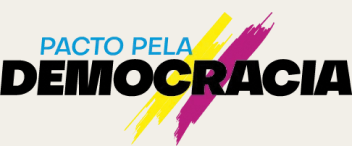
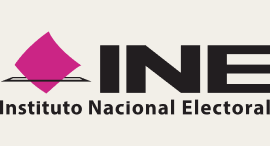
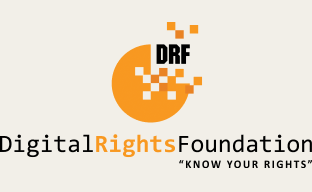
The 2024 elections projects featured in here would not have been possible without the generous support of these funders.
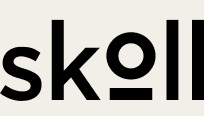


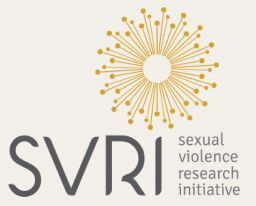
Footnotes
References
Authors
Words by
Shachi Sutaria is a fact-checker at BOOM. She has previously worked as a health research analyst at AMS Consulting, Lucknow for various national and international clients. She is a post- graduate in Public Health- Health administration from Tata Institute of Social Sciences, Mumbai.






